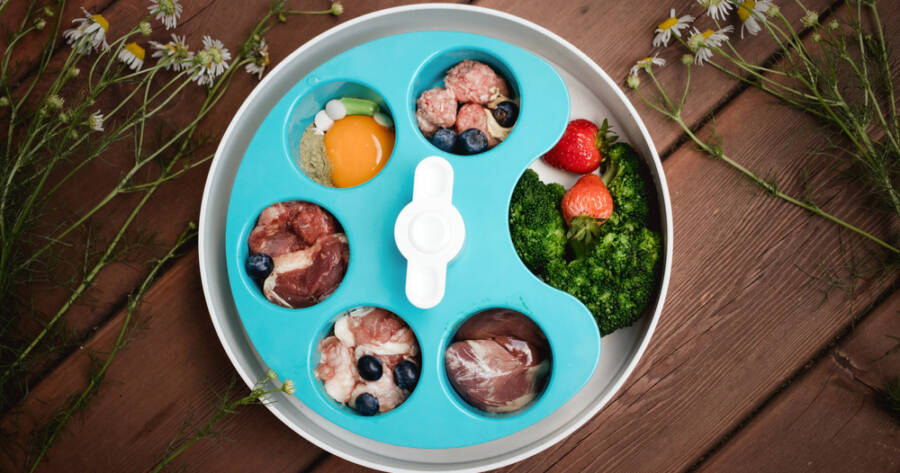The raw diet for pets has gained popularity among pet owners looking for a more natural approach to nutrition. Advocates believe it mirrors what animals would eat in the wild, leading to better health and vitality. However, there are also concerns about safety and nutritional balance. Understanding the benefits, risks, and best practices can help you decide if this diet is right for your pet.
What Is a Raw Diet for Pets?
A raw diet typically consists of uncooked meat, bones, organs, and sometimes fruits and vegetables. Some versions follow a strict prey model, while others include supplements to ensure a complete nutritional profile.
Supporters argue that this diet provides pets with unprocessed, nutrient-rich food that supports digestion, skin health, and muscle development. However, critics warn that raw diets can carry bacteria, cause nutritional imbalances, or pose choking hazards. Before making a switch, it’s essential to research and consult with a veterinarian.
Potential Benefits of a Raw Diet
Many pet owners report noticeable improvements in their pets after switching to a raw diet. Some of the most common benefits include shinier coats, healthier teeth, and increased energy levels. A raw diet can also lead to smaller, firmer stools since unprocessed foods are easier to digest.
For pets with food sensitivities, raw diets may reduce allergic reactions. Processed pet foods often contain fillers, preservatives, or grains that some pets struggle to digest. By eliminating these ingredients, pet owners may notice fewer digestive issues or skin irritations.
The Risks and Concerns
Despite its benefits, a raw diet comes with potential risks. One major concern is bacterial contamination. Raw meat can carry harmful bacteria like Salmonella and E. coli, which can affect both pets and their owners. Proper handling and storage are necessary to reduce these risks.
Another challenge is ensuring balanced nutrition. A diet of only raw meat may lack essential vitamins and minerals, leading to deficiencies over time. Some pet owners add supplements or carefully select a variety of ingredients to maintain proper nutrient levels. Consulting with a veterinarian or pet nutritionist can help avoid these issues.
Top Raw Diet Brands to Consider
For pet owners who want the benefits of a raw diet without the hassle of meal preparation, several commercial brands offer pre-packaged raw meals, including:
Nature’s Variety Instinct
Nature’s Variety offers the Instinct line, specializing in natural, raw, and grain-free foods for dogs and cats. Their products include dry kibble and canned varieties, aiming to provide pets with unprocessed, nutrient-rich food.
ZIWI Peak
ZIWI is a New Zealand-based brand offering ultra-premium pet food made with ethically sourced ingredients like grass-fed beef, lamb, venison, free-range chicken, and sustainably sourced seafood. They use gentle air-drying and freeze-dried processes to preserve raw nutrition within their products.
Stella & Chewy’s
Stella & Chewy’s offers a range of raw and minimally processed pet foods, including freeze-dried and frozen options. Their products are crafted to provide balanced nutrition, aiming to support pet health and vitality.
Before transitioning your pet to a raw diet, consult with a veterinarian to ensure it meets their specific nutritional needs.
Expert Tips for Feeding a Raw Diet
If you decide to transition your pet to a raw diet, start slowly. Sudden changes in diet can cause digestive upset. Introduce raw foods gradually while monitoring your pet’s reactions.
Hygiene is crucial. Always wash your hands and clean food preparation surfaces after handling raw meat. Store raw ingredients in airtight containers and keep them frozen until needed. Thaw portions safely in the refrigerator to prevent bacterial growth.
Experts also recommend variety. Feeding different protein sources, such as chicken, beef, and fish, ensures pets receive a well-rounded diet. Some pet owners include organ meats for added vitamins and minerals, along with small amounts of vegetables for fiber.
Is a Raw Diet Right for Your Pet?
A raw diet can offer many benefits, but it’s not the right choice for every pet or owner. While some pets thrive on raw food, others may struggle with digestion or nutrient deficiencies. Safety precautions and proper planning are essential to making this diet work.
If you’re considering switching to raw feeding, consult with a veterinarian to discuss your pet’s individual needs. Every pet is different, and a well-balanced diet—whether raw, cooked, or commercial—should support long-term health and well-being.

